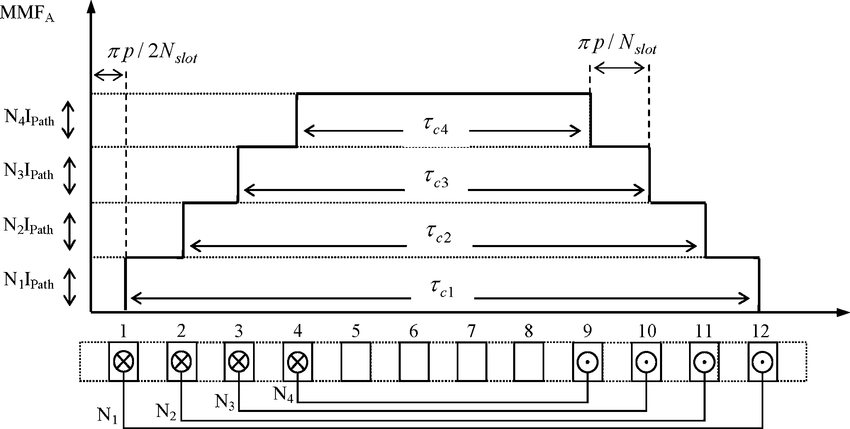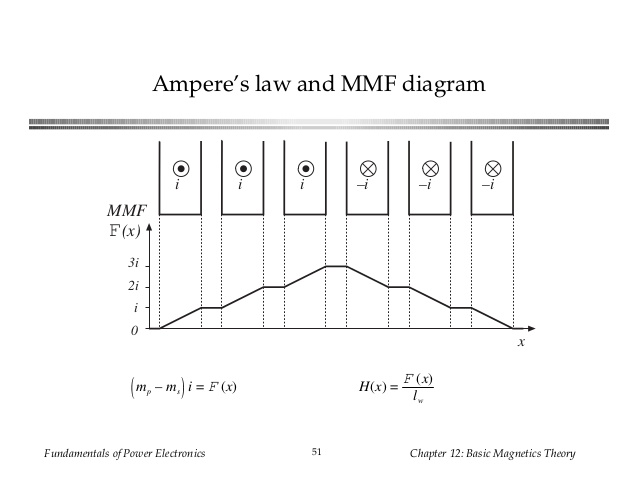Regarding your first query you cannot just choose any curve you like to calculate mmf. The mmf here is due the conductor so you have to include it in the curve while applying ampere's circuital law to calculate mmf due to that conductor.
And the 0 is all about chosen reference. Here the maximum of fundamental mmf waveform is chosen as 0 arbitrarily.
If you don't get it like this see the diagram (attached) at chosen zero. Consider the mmf due to single conductors,you will see that both the flux add up as they are in same direction in the the region around zero.

And as for the sinusoidal peak (assumed that you know about fourier series). The given waveform as we see is a even periodic waveform so the components are likely to contain cosine fundamental and harmonics.
In case you assume a distributed conductor (attached) you can easily see why there is a peak at the position shown. Don't get confused by the details of waveform just see them and get a fair idea of what is happening here.
As you can see in these images the reference is chosen at 0 mmf and not at maximum as before. It is chosen arbitrarily. What really matters is the shape of waveform and its relative position w.r.t to rotor mmf waveform.


For maximum torque.... see it like this, the torque acts in order to align the two mmf either parallel or antiparallel and we see the maximum misalignment is when the two mmf are perpendicular to each other.
Mathematically this is represented by the equation
$$Te = -(π/8)P2ØFs\sinδs$$ Nm
P = Number of poles
Ø = Resultant air gap flux per pole
Fr = Rotor mmf
Fs = Stator mmf
The torque is proportional to product of magnitude of two mmfs and sine of angle between them. The part is maximum at angle = 90.
Images used:
https://www.eeeguide.com/wp-content/uploads/2015/12/MMF-of-Distributed-AC-Windings1.jpg
https://www.researchgate.net/profile/Behrooz_Mirafzal/publication/3270589/figure/fig10/AS:394675438538755@1471109365128/MMF-profile-of-phase-A-of-the-stator-winding-over-180-electrical-degrees-over-a-pole.png
https://image.slidesharecdn.com/chapter12-170102174253/95/chapter-12-50-638.jpg?cb=1483379253
I have tried to keep the answer as simple and as informative as possible. The answer is open to advice and content addition.
 Why does the MMF not start at 0 at 0°? When I apply the $$NI=\int{H \mathrm{d}l}$$ with a curve with a small angle opening around the 0 point (horizontal arrow), I'd get 0.
Why does the MMF not start at 0 at 0°? When I apply the $$NI=\int{H \mathrm{d}l}$$ with a curve with a small angle opening around the 0 point (horizontal arrow), I'd get 0.


